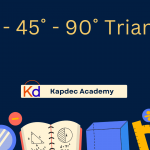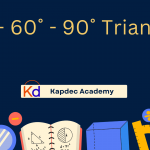AP Physics C: Mechanics is unique because it blends two rigorous disciplines—physics and calculus. Unlike AP Physics 1 or 2, this course requires a solid grounding in mathematical reasoning. Students often underestimate how crucial calculus is, but in truth, it provides the language of motion, forces, and energy. Without calculus, Physics C would be incomplete, as the entire course rests on understanding how quantities change over time and space.
In this blog, let’s break down the essential calculus concepts you must know for success in AP Physics C: Mechanics {1}.
1. The Concept of Differentiation in Physics
Differentiation in calculus measures the rate of change of one quantity with respect to another. In mechanics, this idea applies to nearly every motion concept:
- Velocity is the derivative of displacement with respect to time.
- Acceleration is the derivative of velocity with respect to time.
In short, differentiation lets us move from “where an object is” to “how it moves” and “how its motion is changing.” It’s the foundation of kinematics.
2. Derivatives of Motion Functions
Derivatives allow us to extract deeper meaning from motion equations. If a function describes the position of an object over time, calculus reveals velocity and acceleration. Even when equations are abstract, derivatives tell us the instantaneous behavior of the system, something algebra alone cannot achieve.
3. Integration and Accumulation
Where differentiation tells us how things change, integration tells us the cumulative effect. In physics, integration answers questions like:
- How much distance has been covered over a time interval if velocity is known?
- How much work is done when force is applied across a distance?
Integration is essentially the bridge between “small changes” and “total effects.”
4. Definite Integrals in Physical Contexts
A definite integral is particularly important in AP Physics C: Mechanics. It represents an accumulation between limits:
- Calculating the total displacement from a velocity function {2}.
- Determining the work done by a varying force.
The key is that physics often deals with systems that are not constant. Forces, accelerations, and velocities change—and integrals give us the complete picture.
5. The Fundamental Theorem of Calculus
This theorem ties differentiation and integration together, showing they are inverse processes. In mechanics, this means:
- Derivatives tell us “instantaneous rates.”
- Integrals tell us “total accumulated quantities.”
Understanding this duality helps students transition between velocity ↔ displacement or acceleration ↔ velocity seamlessly.
6. Differential Equations in Motion
Many physics problems lead to differential equations—relationships between functions and their derivatives. For example:
- Newton’s Second Law often produces equations involving acceleration, velocity, and force.
- Solving these requires recognizing patterns of derivatives and integrals.
Though intimidating, these equations show the true interplay between physics and calculus.
7. Applications to Energy and Work
In AP Physics C, energy is more than plugging into formulas—it’s about understanding how forces act over displacements. Integration explains why the area under a force–displacement curve gives work done, and how this relates to changes in kinetic and potential energy.
8. Vector Calculus in Mechanics
Mechanics deals with vectors—quantities with magnitude and direction. Calculus is applied component-wise:
- Differentiating position vectors gives velocity vectors.
- Integrating acceleration vectors gives velocity.
This skill is vital because forces, motion, and fields are rarely one-dimensional.
FAQs on Calculus Concepts in AP Physics C: Mechanics
Why is calculus required in AP Physics C: Mechanics?
Calculus is required because mechanics involves quantities that change continuously, such as velocity and acceleration. Differentiation helps analyze rates of change, while integration helps calculate total effects like displacement or work. Without calculus, the course would lack precision.
What is the role of differentiation in mechanics?
Differentiation explains how one physical quantity changes relative to another. For example, the derivative of position with respect to time gives velocity, and the derivative of velocity gives acceleration. It connects motion concepts at the core of kinematics.
How is integration used in AP Physics C?
Integration helps calculate cumulative effects. It allows students to find displacement from velocity or total work done from a varying force. In mechanics, integration turns small, incremental changes into meaningful totals.
What is the Fundamental Theorem of Calculus, and why is it important here?
The theorem links differentiation and integration, showing that they are inverse processes. In mechanics, this means knowing how to move from instantaneous motion (via derivatives) to total displacement or energy (via integrals). It’s the foundation of problem-solving in the course.
Do I need to solve differential equations in AP Physics C: Mechanics?
Yes, but at a basic level. Many motion problems produce differential equations involving acceleration, velocity, and force. Learning to recognize and solve these equations is crucial because they model real-world systems like springs or projectiles.
How does calculus apply to energy and work?
Work is defined as the integral of force over displacement. This concept explains why energy changes are tied to varying forces. Calculus helps students understand not just formulas, but why the area under a force–distance graph equals the work done.
Is vector calculus important for AP Physics C: Mechanics?
Yes. Motion and forces often occur in multiple dimensions. Calculus is applied separately to each vector component. For example, integrating acceleration in x and y directions gives velocity components, which combine into a complete motion picture.
How can I prepare for the calculus portion of AP Physics C effectively?
Start with conceptual mastery. Practice differentiation and integration of basic functions, then apply them to physics contexts like motion graphs or energy problems. Using platforms like Kapdec, which combine AP-level math and physics practice, helps reinforce these links systematically.
Final Thoughts
Calculus is not an accessory in AP Physics C: Mechanics—it is the framework. Differentiation explains the instant, integration explains the whole, and together they make sense of motion, energy, and forces.
For students preparing for the exam, focusing on these theoretical links between calculus and mechanics will not only boost confidence but also make problem-solving intuitive. At Kapdec, we help students bridge this gap with structured learning methods that emphasize concepts first, ensuring calculus feels like a natural part of physics rather than a separate subject.







